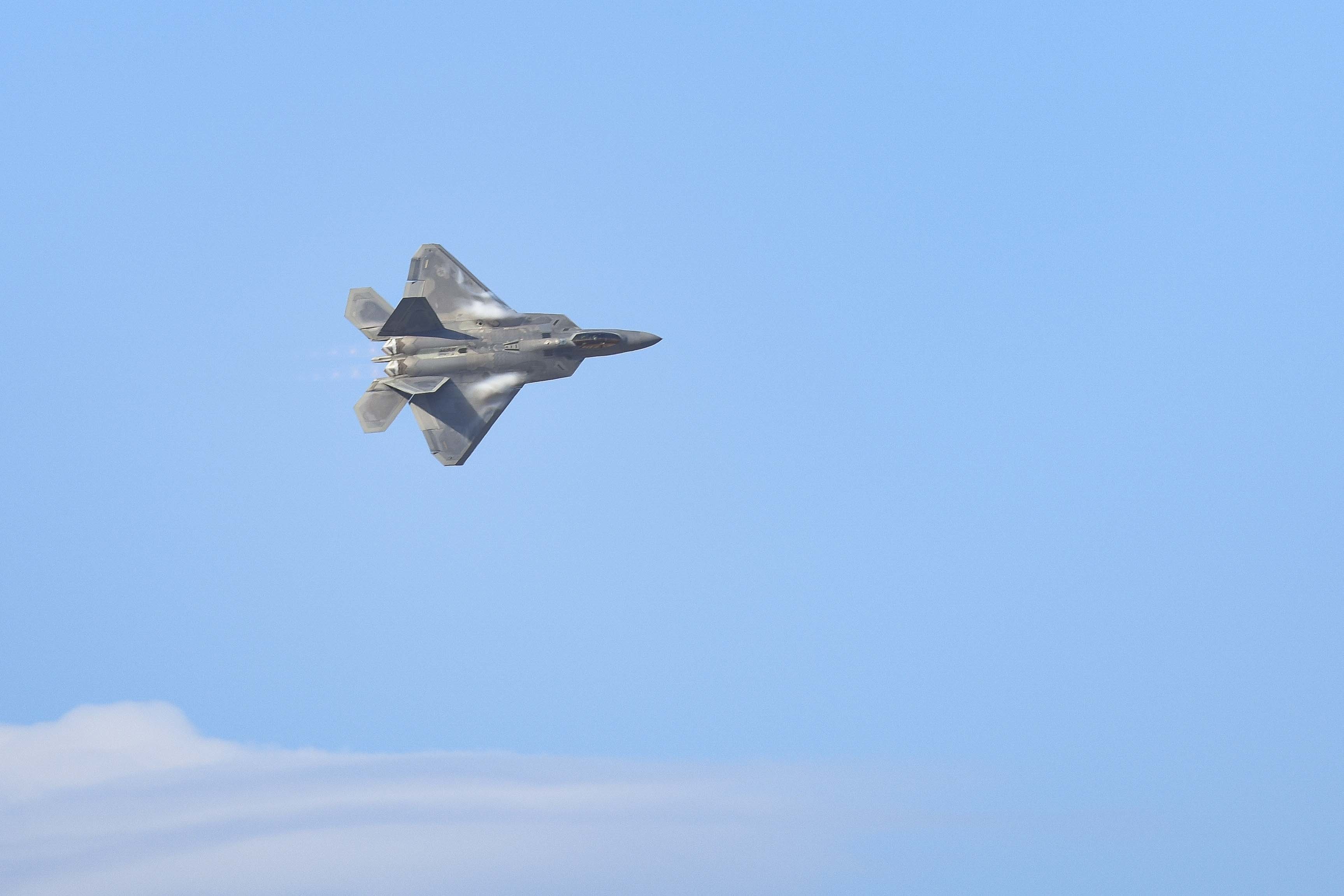
An F-22 Raptor performs for spectators at FIDAE (Feria Internacional del Aire y del Espacio) in Santiago, Chile, April 7, 2018. USAF Photo by SrA. Kaylee Dubois.
The infusion of cash coming to the Air Force in the Fiscal 2018 and 2019 budgets is best used to restore readiness and not for trying to build up the force structure, because it’s likely to be a transient blip in a sustained era of austerity, Air Combat Command chief Gen. Mike Holmes said Wednesday. He also said ACC will look to a shorter horizon for new capabilities and that executing budgeted flying hours will be key to restoring readiness and also retaining pilots.
Speaking to an AFA industry symposium on ACC priorities at JB Langley-Eustis, Va., Holmes noted that “there’s a lot of money in ‘19. We expect to see money close to that [level] in ‘20,” and it marks “about a $70 billion boost across the Department of Defense.”
However, “I’m skeptical it will last much longer than ‘20,” Holmes said. “Cooler heads are likely to prevail—no matter which party controls Congress after the midterms—to try to balance that budget back a little bit” after a couple of years.
In the meantime, “we will advocate, in Air Combat Command, that we use it to fix the holes in the force … to try to put ourselves on a more sustainable footing, before we try to add a lot of additional forces with that money.” The goal, he said, is to make USAF’s 55 squadrons “healthy and whole” with solid manning, resources, and training.
Holmes said he has reined back long-range planning that dwells too much on the long-term structure and capabilities of the force and instead wants to focus on a much shorter horizon. The technology competition—not only with Russia and China, but also other would-be powers—is moving too fast for a very long-range plan to make much sense, he said. Though “we will … still put bets” on research and development that will pay off “10, 15, 20 years, … the five-to-seven year point is where I want to concentrate my resources,” he told assembled industry representatives, adding that’s how he’d like them to pitch their solutions to ACC’s problems.
Technologies that look too far out run a very real risk of being overtaken by unexpected developments, he noted. “It’s really hard to predict 25-30 years ahead,” Holmes noted.
Toward that end, Holmes said the whole process of setting requirements and fielding capabilities must speed up. “I can’t spend two years on an AOA [analysis of alternatives] anymore,” he asserted, and he also pitched for a new paradigm in which developmental and operational test are done near simultaneously, to save time and figure out faster if a new capability will actually provide the “tools” needed to do the job.
“We’ve got to test faster,” he said. The Air Force is taking steps to get new concepts “across the ‘Valley of Death,’” wherein successful experiments don’t transition to new programs of record because no requirement have been stated, he added.
One key element in restoring readiness will be flying all the hours Congress has approved for the Air Force. Holmes explained that flying hours drive everything ACC does, but said the command is only flying about 85-90 percent of budgeted hours this year because of shortages of pilots, maintainers, and other resources. “Guys come to fly,” he said, and when they don’t, readiness suffers and the draw of the airlines becomes hard to resist.
Of the increased flying hours provided in the budget, “we have to fly all of that so we can ask for more,” Holmes noted.
“I think we are starting to see some effect,” he reported, in increased aircrew retention, readiness, and morale. Near the flightline at Langley, a digital box scoreboard shows hours allocated by month and year, and how well the squadrons and ACC are doing to reach those goals.